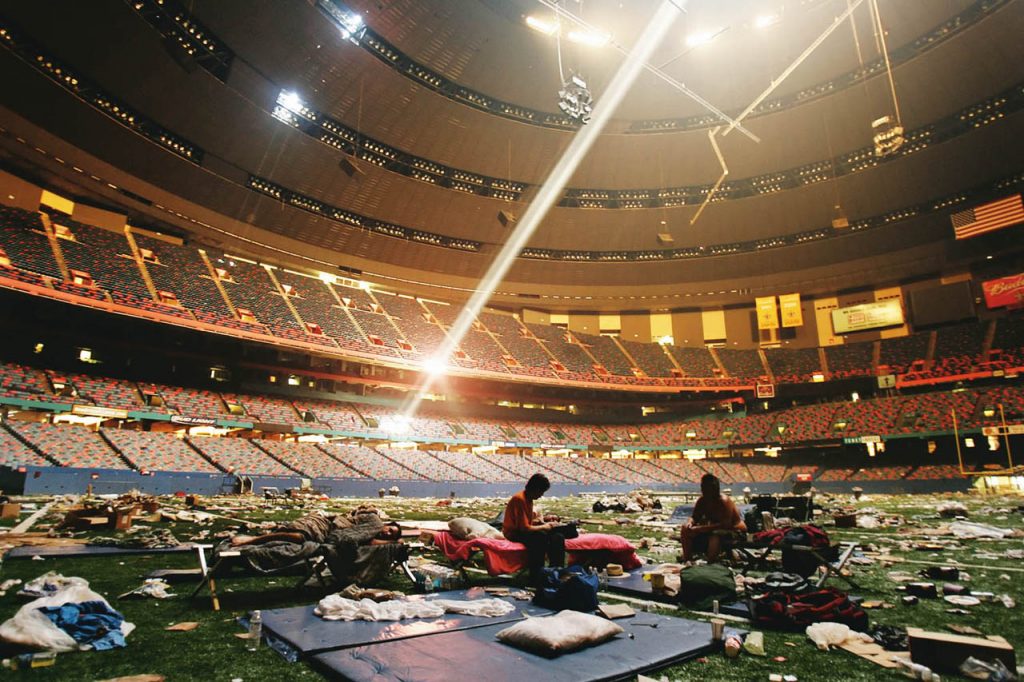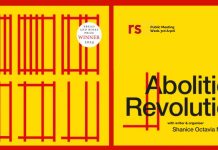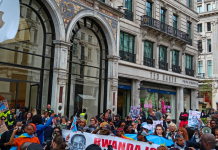Nine years on from the devastating Hurricane Katrina, Lois JC, who visited New Orleans last year to see how the city had changed, writes on the lasting impact of the disaster.

Nine years ago this week Hurricane Katrina rampaged towards the US coast eventually hitting New Orleans, where it was to become one of the deadliest hurricanes in American history. When the levees and flood defence systems broke on 29th August 2005 tens of billions of gallons of water submerged whole areas of the city. The Army Corp of Engineers, who were supposed to maintain the system, and the government, who cut funding, were responsible for this failure.
The aftermath was just as indicting. Instead of providing the vital aid needed, the government sent in guns, police and the National Guard. It is now widely accepted that this so-called ‘natural’ disaster would not have been so catastrophic were it not for government failure.
Black exodus
One of the first things you notice when visiting New Orleans is how intertwined issues like race and class are. Those families most able to afford homes in safer, flood-protected areas and that had resources to evacuate suffered far less than poorer black families.
In 2000 the population of New Orleans was 478,000. After Hurricane Katrina this plummeted to only 155,000. The last census in 2013 showed the population at 378,715. This is significantly lower than it was in 2000, but many herald this as the city returning to its pre-Katrina self. But let’s take a look at the demographics. The latest figures I could find for demographic representation in New Orleans are from 2010. They show a 16 percent drop in the white population compared with over double that for the black population – a 37 percent drop. It is hardly surprising that black residents of New Orleans will not be able to return to the city. A poll from 2006 showed that 53 percent of the black community lost absolutely everything – compared with 19 percent of the white population.
Scars beneath the surface
For tourists the city may now look unscarred; the famous French Quarter has been renewed and the Superdome (once a shelter for refugees) has been rebuilt. But the poor, black areas of the city were ignored. In many parts of the Lower 9th ward it looks virtually the same, 9 years after the storm. Abandoned empty spaces where houses used to be, overgrown with weeds. The population in this ward alone fell by around 10,000. The way the aftermath of the hurricane has been dealt with means the poor, black inhabitants today have little means of returning to their homes.
Economic shock therapy
Many schools, hospitals and public housing were destroyed in the hurricane and this was used as an excuse to privatise. Naomi Klein refers to this as ‘economic shock therapy’. Public hospitals were shut down, demolished and destroyed. One of the first state actions was to fire unionised teachers. The school system has now been replaced with ‘charter schools’ – which operate in a system similar to academies in the UK (public funding, but independent from the state). The state gives money to schools only if they become a charter school. Charter schools have complete discretion on their disciplinary policy and are not accountable to an elected body like the school board.
Whilst the rich white children go to the private schools or one of the three selective admission charters, the standard charter schools are full of poor black children with even more security guards than unexperienced young white teachers. The militarised behaviour policies mean often children are arrested for things like coming into school in the wrong uniform one too many times; resulting in the criminalisation of poverty.

This destruction of the school system has not been met without resistance. When, post-Katrina, the state initially refused to reopen the Martin Luther King School in the Lower 9th Ward parents and teachers squatted the school and just started teaching. It became a national news story until the secretary for education at the time offered the state money to turn the school into a charter school – which it did.
Covering up Katrina
Those at the top will always try to keep the true story of the racism, endemic in the aftermath of Katrina, covered up. Mainstream media post-Katrina tried its hardest to portray black people who did not evacuate as criminals who ‘looted’ food whilst white people were ‘survivors’ who ‘found’ food. Tales of muggings and violence were everywhere. Algiers Point, a mostly white area in an otherwise predominantly black neighbourhood had armed white militias cordoning off many of the streets posting signs that boasted: ‘We shoot looters.’

Interviews with hurricane victims showed reports of racism during the evacuations by police and white volunteers. But in 2011 five New Orleans police officers were convicted of civil rights violations for killing two African Americans on Danziger Bridge. This verdict was massive for all those resisting police racism and murder.
Anyone keeping up with the events in Ferguson, Missouri following the police murder of an 18-year-old black student Michael Brown, will know that these issues are still prevalent in America today and are still being fought with inspiring resistance. In 2006 during the aftermath of Katrina, rapper Kanye West said ‘George Bush doesn’t care about black people’, but how different does the situation seem to be with a black president?
Nine years on from Katrina the resentment and class anger that bubbled under the surface then is now bursting out onto the streets. It is difficult to predict where the events in Ferguson will lead, but while the anger remains anything is possible.



















[…] Source […]
[…] http://rs21.org.uk/2014/08/28/nine-years-since-hurricane-katrina-has-anything-changed/ […]
[…] Nine years since Hurricane Katrina: has anything changed? |. […]
Black climate campaigners in the US have also been making the link between Katrina and Ferguson: http://350.org/how-racial-justice-is-integral-to-confronting-climate-crisis/#.U_WjUMR9qUE.twitter
Hurricane Katrina is what the future looks like if we don’t tackle climate change:
http://news.nationalgeographic.com/news/2013/03/130319-hurricane-climate-change-katrina-science-global-warming/